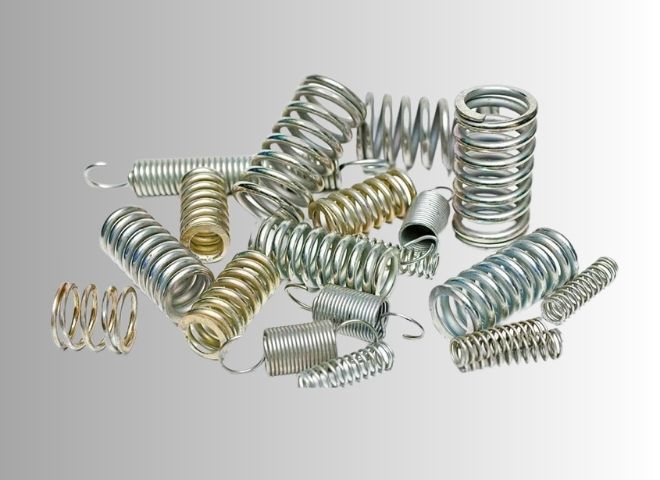Do You Need a Custom Spring or a Stock Spring?

Springs are essential components in many mechanical systems, offering flexibility, tension, or compression where needed. However, when choosing a spring for your application, one key decision is whether to opt for a custom spring or a stock spring. Both options have their pros and cons, and the right choice depends on your specific requirements. Let’s explore the factors that can guide your decision.
What Are Stock Springs?
Stock springs are pre-manufactured and readily available in standard sizes, shapes, and load capacities.
Advantages of Stock Springs:
- Immediate Availability: Stock springs are off-the-shelf products, saving time.
- Cost-Effective: They are mass-produced, making them more affordable.
- Variety: Stock springs come in various types, such as compression, extension, torsion, and more.
- Standard Applications: Ideal for applications with no special requirements.
Limitations of Stock Springs:
- Limited Customization: They may not fit perfectly into non-standard designs.
- Performance Compromise: They may not deliver optimal performance in unique applications.
What Are Custom Springs?
Custom springs are designed and manufactured to meet specific requirements, including size, material, and load capacity.
Advantages of Custom Springs:
- Precise Fit: Custom springs are tailored to fit your exact design and specifications.
- Optimized Performance: They ensure maximum efficiency and durability in specialized applications.
- Material Selection: You can choose the material to match the application’s environment and stress factors.
- Unique Designs: Custom springs can be made in unconventional shapes or for unique functionalities.
Limitations of Custom Springs:
- Higher Cost: Customization typically involves higher costs than stock options.
- Longer Lead Time: Designing and manufacturing a custom spring takes more time.
- Design Expertise Required: Requires collaboration with experienced engineers and manufacturers.
Factors to Consider When Choosing
When deciding between a stock spring and a custom spring, evaluate the following:
- Application Requirements
- If your application involves standard forces, sizes, and environments, a stock spring might suffice.
- For unique stress points or design constraints, a custom spring is a better fit.
- Budget Constraints
- Stock springs are cost-effective for large-scale, non-specialized applications.
- Custom springs justify their cost in critical or high-performance applications.
- Timeframe
- If you need springs immediately, stock springs are the way to go.
- If time permits, custom springs can deliver better long-term value.
- Environmental Factors
- Stock springs may not be designed for extreme temperatures, corrosion, or specific stresses.
- Custom springs can be tailored to withstand harsh environments.
- Production Scale
- For large-scale manufacturing, the cost of custom springs may be offset by better performance and durability.
When to Choose a Stock Spring
- Prototyping or quick turnaround projects.
- Non-critical applications with standard loads and dimensions.
- Budget-sensitive projects.
When to Choose a Custom Spring
- Specialized machinery or unique product designs.
- Applications requiring precise performance or durability.
- Extreme environmental conditions or non-standard stress factors.
Conclusion
The decision between a custom spring and a stock spring hinges on your application’s specific needs, budget, and timeline. While stock springs are a great choice for simple, cost-effective solutions, custom springs offer the flexibility and performance required for specialized applications. Assess your priorities carefully, and when in doubt, consult with a spring expert to make the best choice for your project.
